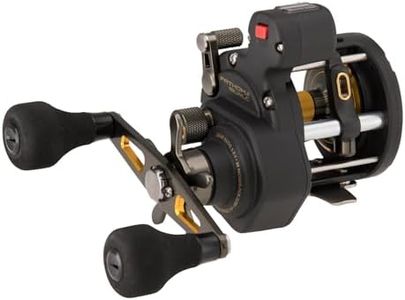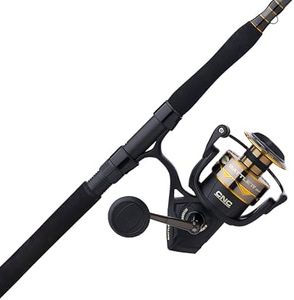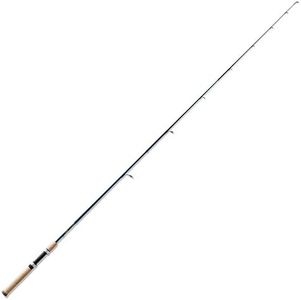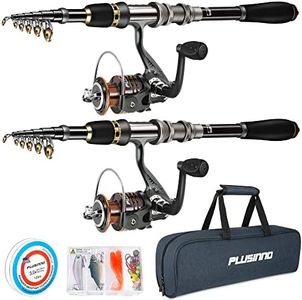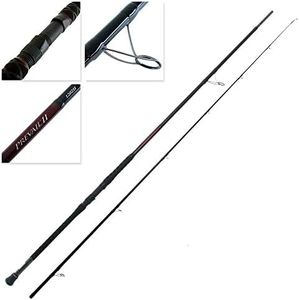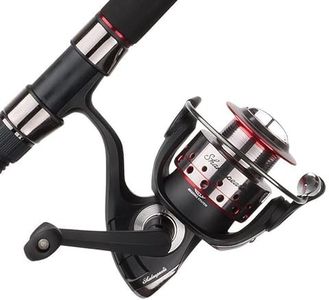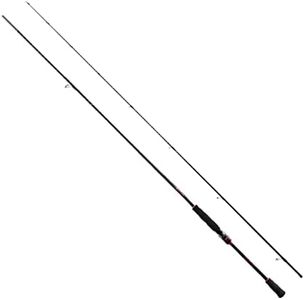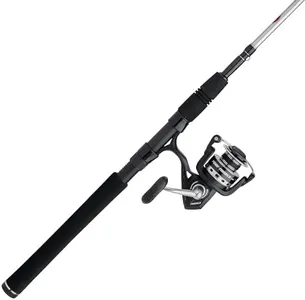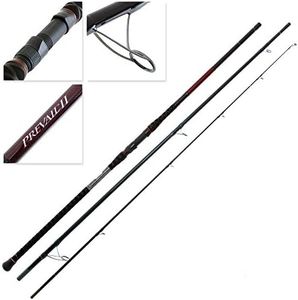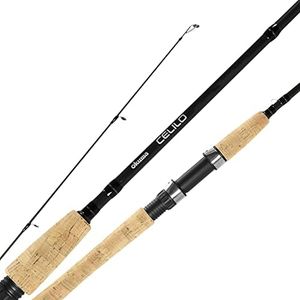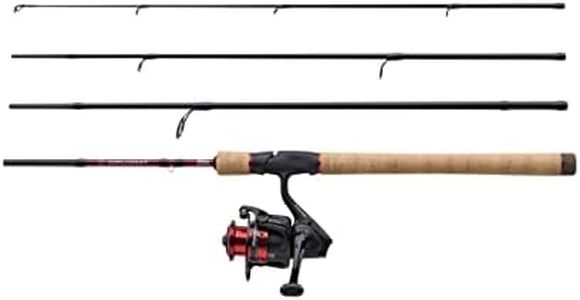We Use CookiesWe use cookies to enhance the security, performance,
functionality and for analytical and promotional activities. By continuing to browse this site you
are agreeing to our privacy policy
10 Best Fishing Rods
From leading brands and best sellers available on the web.By clicking on a link to a third party's website, log data is shared with that third party.
Buying Guide for the Best Fishing Rods
Choosing the right fishing rod can greatly improve your fishing experience. Fishing rods vary in length, material, power, action, and a few other features—all of which can make a big difference in performance. To pick the best rod, you'll want to consider the type of fishing you plan to do, the environment (river, lake, ocean), and the kind of fish you hope to catch. Understanding the key specs of fishing rods will help you make an informed decision tailored to your needs.Rod LengthRod length refers to the measurement from the rod tip to the handle. It's an important spec because it affects both casting distance and control. Shorter rods (around 5 to 6 feet) offer better accuracy and are good for fishing in tight spaces like streams or when fishing from a boat. Medium-length rods (6 to 7 feet) provide a balance between accuracy and casting distance, making them the most versatile choice for different environments. Longer rods (over 7 feet) are best when you want to cast far, such as from the shore, or when targeting bigger fish. Choose a length that matches your fishing environment and the kind of control or distance you need.
Rod PowerRod power describes the rod’s strength or lifting ability, often labeled as ultralight, light, medium, medium-heavy, or heavy. This spec matters because it determines what size fish you can handle and what type of lure or bait you should use. Ultralight and light rods are best for smaller fish and lighter lures, often used for things like panfish or trout. Medium and medium-heavy rods can handle a broader range of fish and are suitable for most freshwater fishing situations. Heavy rods are meant for large species, heavy lines, and big lures, like when deep-sea fishing or targeting big catfish. Consider the typical fish size and the water conditions you expect to encounter to help you decide.
Rod ActionRod action is how much and where a rod bends when pressure is applied, usually described as slow, moderate, or fast. Fast action rods bend mostly near the tip and are more sensitive, making them good for feeling subtle bites and quickly setting the hook. Moderate action rods bend more in the middle, while slow action rods bend throughout their length, providing flexibility and longer casting. If you need quick reactions and sensitivity, like with certain species or techniques, a fast action rod might be best. If you want smoother casting or are using live bait, moderate or slow action rods can be better suited.
Rod MaterialFishing rods are generally made from graphite, fiberglass, or a combination of both. The material affects weight, sensitivity, and durability. Graphite rods are light and sensitive, allowing you to feel bites easily, but can be more brittle. Fiberglass rods are tougher and more flexible but don't offer as much sensitivity. Composite rods mix both materials for a balance of durability and sensitivity. If you value sensitivity for detecting light bites, go for graphite. If you need a tough rod for hard-fighting fish or rough conditions, fiberglass might be better. Composite rods are good if you want the best of both worlds.
Handle Type and MaterialThe rod handle is where you grip the rod, and its comfort can affect your fishing experience during long sessions. Handles are usually made of cork or EVA foam. Cork feels warmer and is comfortable for prolonged use but can wear down faster. EVA foam is durable, resists moisture, and provides a firm grip. Also consider handle length—long handles are good for two-handed casting and powerful fish, while short handles offer more agility for shorter casts. Pick the material and length that feel most comfortable in your hand and fit your fishing style.
Number of PiecesFishing rods can be one-piece or multi-piece (usually two or more sections that fit together). One-piece rods tend to be stronger and more sensitive, but are harder to transport. Multi-piece rods are easier to pack and store, making them suitable for travel or hiking to fishing spots, though they may lose a bit of sensitivity at the joint. If you always fish close to home or in your own boat, a one-piece might be ideal. If portability is important, consider a two-piece or travel rod.
